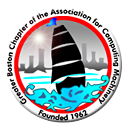Escaping From "Square Wheel" Data Objects
You are probably familiar with the value of making wheels round, pillars vertical, or mirrors flat. How about the value of making data objects: purely connective, asymmetric, and all the same? The engineering optimizations which apply in all these cases are similar. A deficiency is reduced until a structural constraint is reached and no further reduction is possible. Vibration is eliminated from wheels, shear forces from pillars, and image distortion from mirrors. Eliminating needless complexity from computer applications and language imposes the three analogous constraints on data objects.
A goal of language design could aim to allow the thorough elimination of needless complexity from computer applications or any precise technical description. When that is done, there is a kind of phase change (analogous to freezing) which forces uniformity on the structure of the component data objects representing the technical subject matter. The above constraints plus more subtle constraints imposed by the simplification lead to an apparently enduring optimum structure for data objects: hierarchically interconnected pointers. When languages for diverse subject matter all use the same data objects it is easy to merge those languages into a single language, leading to another round of simplifications.
Possible application of optimum data objects extends into technical education and other technical communication. Traditional notations have broadly failed to express precise information precisely enough. Exposition gets diffused into a mixture of mathematical expressions, natural language text, diagrams, metaphors, examples and other informal expression. This gives students a large burden of distilling out the precise information and integrating it. Better understanding of the basic structure of information can reduce the burden. Understanding its most basic structures has been neglected in information technology, a strong contrast with other technologies.
This is a joint meeting with the IEEE Computer Society. Meeting begins at 6:30 pm. Coffee at 6:15 pm. An optional, pay-your-own dinner follows. For more information: Archie Blondin at 617-856-1909 or archie.blondin@tfn.com.
Ed Lowry has been doing research on eliminating needless complexity for over 30 years, mostly at IBM and Digital Equipment Corporation. He helped pioneer compiler optimization and multiprogramming after receiving degrees from University of Toronto and MIT. He is the author of 2 patents and has published papers in computer science, physics, and technical education. After finding that translating physics into computer style language provided clarification, he felt encouraged to further explore improved representation. He is pursuing cooperative efforts to develop the use of optimum data objects. Related articles can be found at http://www.ultranet.com/~eslowry.
